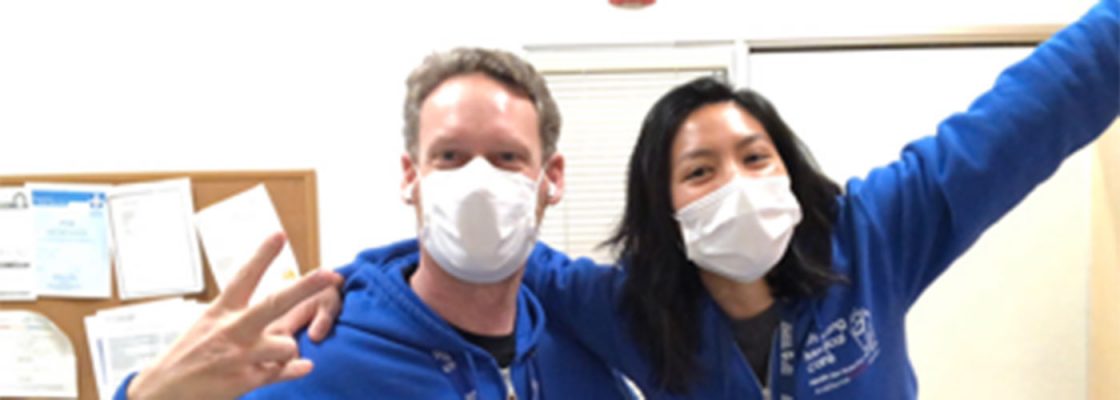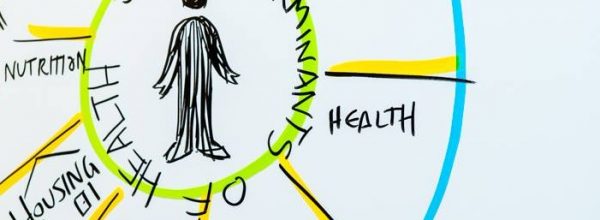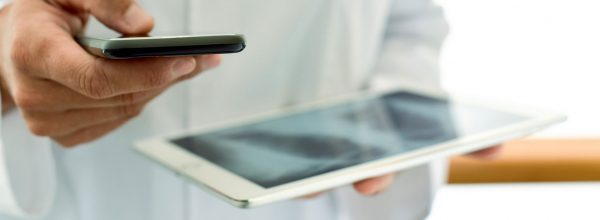Not too long ago, it was an elbow-to-elbow, shoulder-to-shoulder job. That’s one of the things community health workers liked most about their job with the Community Health Center Network (CHCN). They gave low-income patients rides to doctors’ appointments. They visited them at home, and they even met them bedside at the hospital to chat and offer support.
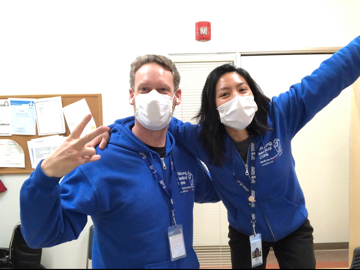
Community health worker Jeff Heath and his co-worker Kristin Soriano.
The COVID-19 pandemic has upended that close, personal way of working. But it hasn’t slowed them down. In fact, CHCN recently trained six new community health workers — increasing their ranks from 25 to 31 people across its eight organizations — to boost Care Neighborhood, an intensive case management program that connects high-risk, high-needs patients to local resources (like food and housing) and prevents unnecessary hospitalizations by focusing on addressing the social determinants of health. (To learn more about the technology behind the program, read our case study.) With just six people centrally, Care Neighborhood can now reach hundreds more patients, said Jacob Deme, the lead community health worker at CHCN, who has been training the new hires.
“We’re reaching people at a time when they’re feeling most disconnected from their community,” said Deme. “We get them engaged, so when we return to business as usual, all of a sudden they’re more engaged in their health clinic and ready take on healthy changes.”
This expansion actually runs counter to the national trend. The National Association of Community Health Workers recently polled its members and discovered that community-based organizations are laying off their community health workers. Health Affairs reported that some community health workers at federally qualified health centers have been “instructed to simply ‘find something to do’ while their supervisors are occupied with patient care.”
CHCN’s ability to train more community health workers is thanks to new flexibility in the Health Homes Program, which serves eligible Medi-Cal beneficiaries with complex medical needs and chronic conditions. In the wake of the COVID-19 crisis, California’s Department of Health Care Services removed the program’s previous in-person requirements — touches, home visits, and field work — and gave clinics permission to do phone visits. “We really quickly flipped to being telephonic. That’s amazing during a time when a lot of folks are scrambling for reimbursement,” said Angela O’Brien, Care Neighborhood’s program manager.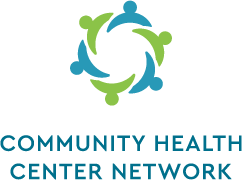
To do the switch, O’Brien has been updating workflows. New hire workshops on motivational interviewing and empathic communication have been adapted for telephone calls. Shadowing activities, in which trainees would normally accompany Deme on patient visits, have been replaced with Zoom and conference calls.
But supporting patients and building a rapport over the phone is difficult — even for experienced community health workers. Nothing can replace truly replace observing a patient’s body language, reading the room, and experiencing someone’s living environment for yourself, said Deme. Many homeless patients do not own cell phones, and community health workers are reporting that even as the crisis upends livelihoods, phone companies are still shutting off service because of late payment.
Community health workers used to be able to intercept patients at the clinic, checking in with them after therapy or on their way to see their provider. But now there are fewer opportunities for that kind of outreach — especially if they don’t pick up the phone.
For instance, Amber Soublet, an AmericCorps Health Fellow who has been working as a community health worker for about a month, recently talked to one patient three separate times in a single day, but hasn’t been able to contact them since. So Soublet is intent on making every minute of every phone call count.
“These are difficult times and I’m going to do everything I can to get them what they need,” she said. “I’m willing to go the extra mile, like verify insurance and make sure it’s ready to go so they don’t have any trouble seeing their provider. It’s a small thing, but it takes that stress off their plate.”
Community health workers are also going the extra mile to track down and vet resources for patients. What’s available is extremely limited. And even through Social Security and unemployment offices are technically open right now, getting help can now take several hours.
“Everyone investigates resources as soon as they come out,” said Deme. “As much as I can, I go through the referral process myself to find out what it would be like for a patient. Do you sit on the phone for a while? How long is the wait? It’s important to set expectations for our patients, especially when they’re already experiencing a lot of anxiety and panic. I don’t want myself or other community health workers to contribute to another source of uncertainty.”
Deme added, “Taking on the role of the consumer has taught me a lot, and it’s something I’m going to carry on after shelter-in-place ends.”
Jeff Heath, who has been a community health worker at LifeLong Trust Clinic for a little more than two years, said that staying up to date is also paramount. For instance, when the county suddenly opened up 300 hotel beds, he rushed to put in applications and was able to get three out of his 28 patients housed.
“We’ll get an email that says an LGBT group has funding for people who may lose housing. If I can submit an application as soon as it becomes available, then one of my guys gets funding for rent. When a resource pops up, you go for it. You figure out who on your case load is a good fit and you go for it,” Heath said.
Thanks to contributions from a local food bank, Heath has started dropping off bags of groceries on his patients’ front porches. “I miss the interaction I used to have with patients,” he said. “Now I show up with a mask and gloves, and I can’t even shake their hand.”
But telehealth is helping lower the number of appointment no-shows among seniors, who were hesitant to visit the clinic because they’re at higher risk for severe illness from COVID-19, said David Hoang, a community health worker at Asian Health Services. “With telehealth, patients can still get medical care from home and minimize their risk,” Hoang said.
At the same time, community health workers are creating spaces to just listen to patients. People are lonely, and they’re discovering that this emotional support is just as important as coordinating care during the pandemic. Soublet said, “It’s something as small as seeing how their day is going. A lot of patients, especially the elderly, are really missing that interaction. Even if they don’t have medical needs, they’ve expressed it’s nice to have someone check in on them and know we still care.”
![]()
VOICES FROM THE FIELD: INNOVATING DURING THE COVID-19 CRISIS
This series is based on the extraordinary work that frontline health care staff are doing in the current public health emergency. Do you want to share a story about COVID-19 and the health care safety net? Please get in touch!
Find this useful or interesting? We’re constantly sharing stuff like this. Sign up to receive our newsletter to stay in the loop.

